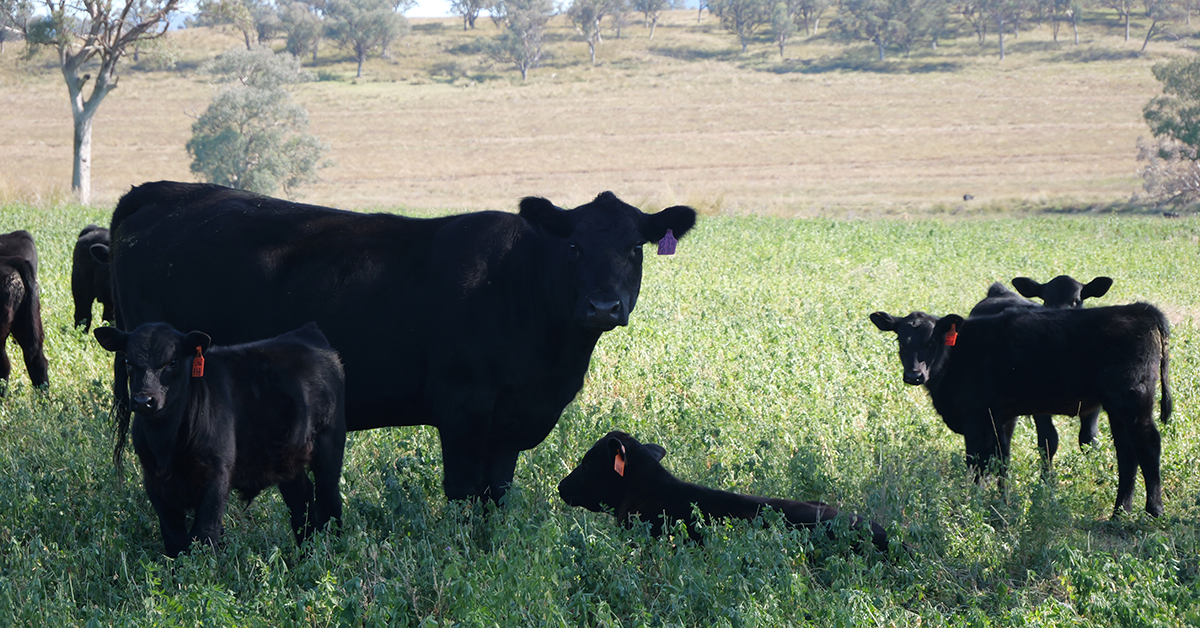Making the most of Genomics


The effectiveness of genomics in delivering value hinges upon the support of a well-recorded genomic reference population – particularly for hard-to-measure and lowly heritable traits.
The genomic reference population refers to the number of genotyped animals with a phenotypic record for a particular trait. The amount of benefit received in the predictive ability of estimated breeding values (EBVs) from the incorporation of genomics is dependent on:
The foundation – a well-recorded genomic reference population
The Trans-Tasman Angus Cattle Evaluation (TACE) has built a large well recorded genomic reference population through both personal submission of performance records by members and the Angus Sire Benchmarking Program (Figure 1). These contributions have provided TACE with a substantial genomic reference population for use in the genetic evaluation and provides the increase in predictive ability of EBVs with the incorporation of genomics.

Growing the Reference Population
Over the past 5 years, there has been continued growth in the number of records submitted by the membership across most traits (Figure 2 – 4). Though, there has also been a 20% increase in the number of calves registered from 2017 to 2022. Therefore, the increase in performance data submissions is most likely attributable to the increase in calves registered, aside from traits that have become of focus more recently (mature cow weight, docility, and structure).



Accompanied by the increased percentage of animals being genotyped rising rapidly over the past 5 years, from 25% in 2017 to 60% in 2022 (Figure 5), the genomic reference population for many traits continues to grow, providing increased predictive ability of EBVs from TACE.

Analysis of performance submissions for each calf crop, highlights that though there has been an increase in overall performance submissions (Figure 2 – 4), there has been a consistent percentage of animals recorded for weight and ultrasound scanning traits across 2018-2021(Figure 5). Contrastingly, the percentage of submissions of docility and structural traits has increased across 2018-2021 (Figure 5). Traits measured later in the animal’s life such as 600-day weights, structural scores and carcase scans currently appear lower for 2022 compared to the year prior, which is reflection of these animals being currently measured and yet to be submitted to TACE due to being from Spring calving herds (born in 2022).
Future
The increasing size of the genomic reference population, from both the submissions of phenotypic data and genotyping of animals will see a continual improvement in the predictive ability of estimated breeding values. In turn, members gain improvements in selection accuracy and genetic gains, particularly for younger animals which have limited phenotypic data recorded.
A key focus should be in increasing the size of the genomic reference population of hard-to-measure and lowly heritable traits, as these will see the most benefit. The Angus Sire Benchmarking Program plays a significant role in this area and will continue to do so in the future.
Key Points
For further information on the benefits of genomics, and understanding how you can incorporate it within in your herd, check out the Angus Education Centre Module – Genomics – What, How, Why and When?
You can also reach out to the extension team to discuss how this specifically relates to your herd.
– Hanlie Jansen, Extension Officer